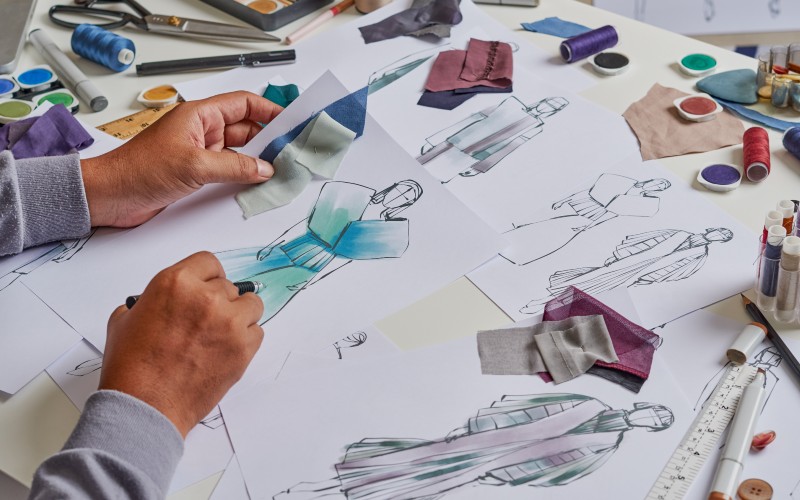
The fashion industry contributes billions of pounds annually to the UK economy. With the large sums to be made in fashion, fashion houses, designers and retailers will want to continue to profit from their designer brands, while staying ahead of fashion trends and protecting designs from copycats. Those that have expended resources, time and creativity are entitled to be remunerated for their efforts and prevent others from infringing their works. Intellectual property law offers protection for creative endeavours and designers may choose either to register a design in the UK or to benefit from unregistered design protection.
Designs, what can be protected?
For a design to enjoy registered protection, it must be new and have individual character, meaning that it must be materially different to other designs in the market. A registered design protects the appearance of a product, including its shape but does not protect any functional aspect of the design.
Although you do not need to register a design to enjoy protection, there are advantages in doing so. The process of getting a registered design is relatively short and inexpensive when compared with, for example, registering a patent. The process for a UK design is administered by the UK Intellectual Property Office and registered protection can usually be obtained within a number of weeks, costing no more than a few hundred pounds. Registration of a design also serves as a warning to third parties that the design is valued and that the owner has incurred time and expense to protect it. From a commercial point of view, registration may help to build up the reputation and goodwill relating to the product, particularly when used with a strong brand.
Protection for a registered design lasts up to 25 years and the owner does not need to prove that a design was copied in order to enforce infringement action. The position is different in an unregistered design which enjoys protection for only 10 years from entering the market and the designer must prove that the design was copied to be successful in an infringement action. In the fast moving world of fashion it may not seem relevant to register a design because styles change so quickly over a short period of time. However, many designers do choose to register designs because of the additional protection it offers and the more straightforward approach to dealing with infringements.
Conclusion
In a billion pound industry, fashion houses, retailers and designers are constantly working to expand their portfolio of designs. Some may opt to register their designs while others may choose not to for the reasons outlined. It may be more advantageous however, to have a design registered as stronger protection exists, and acts as a deterrent to copycats.
With an unregistered design, the designer will have the onerous burden of proving that a design was copied and enjoys a shorter term protection as compared to a registered design.
